Dental Health
Dental Health Education Provided by Our Dentist in Yardley, PA
You’re never too young or too old to learn about proper dental care. That’s why Cornerstone Dental has created this section that provides you with the necessary tools and information to obtain the proper home care.
- Brush thoroughly twice a day and floss daily
- Eat a balanced diet and limit snacks between meals
- Use dental products which contain fluoride, including toothpaste
- Rinse with a fluoride mouth rinse if advised to do so
- Make sure children under 12 drink fluoridated water or take a fluoride supplement if they live in a non-fluoridated area
- Visit your dentist regularly for professional cleanings and oral exams
- Replace your toothbrush every 3-4 months
The following are indications of good oral hygiene:
- Your teeth are clean and free of debris
- Gums are pink and do not hurt or bleed when you brush or floss
- Bad breath is not a constant problem

Oral Hygiene Care

Dental Cleaning
Halitosis is a sophisticated word for “bad breath”. Depending on the cause, bad breath may strike on occasion or be a persistent condition. The most common cause of bad breath is bacteria. Because the mouth is moist and warm, it creates perfect conditions for the millions of bacteria that live in the mouth. In fact, approximately 80% of bad breath is caused by something in the mouth.
Some types of bad breath, such as ‘morning mouth,’ are considered fairly normal and are not usually health concerns. However, persistent bad breath may be a sign of more serious problems with the gums and teeth. Bad breath may be caused by the following:
- Poor dental hygiene – poor oral hygiene can leave food particles to decay in the mouth
- Infections in the mouth such as periodontal (gum) disease Respiratory-tract infections such as throat infections, sinus infections, lung infections
- External agents including foods such as garlic, onions, and coffee, as well as cigarettes and chewing tobacco
- Dry mouth caused by salivary gland problems or by breathing through the mouth
- Systemic illnesses such as diabetes, liver disease, kidney disease, lung disease, sinus disease, reflux disease and others
Call our office promptly if you have bad breath with painful, swollen gums that bleed easily or loose teeth. We will perform a physical examination of your mouth to determine the cause. If we discover that systematic problems are the cause, we may refer you to your family physician. In severe cases of gum disease, we may recommend a specialized periodontist.

Halitosis
Sealants

Bonding
Fillings
A filling is a way to restore a tooth damaged by decay back to its normal function and shape. If you have a tooth that requires a filling, the dentist will first remove the decayed tooth material, clean the affected area, and then fill the cleaned out cavity with a filling material. A filling helps prevent further decay by closing off any cracks or spaces where bacteria can enter.
There are a variety of filling materials available including gold, silver, plastic and porcelain. The dentist will work with you to determine which material is best, depending on the extent of repair, where in the filling is needed, and cost. Each filling material is briefly explained below:
- Gold fillings are custom made in a laboratory and then cemented into place. While gold fillings are often the most expensive choice, many consider it the best filling material. Gold inlays are well-tolerated by gum tissues and may last more than 20 years.
- Amalgam (silver) fillings are a more inexpensive choice and are tolerant to wear. However, due to their dark color they are more noticeable than porcelain or composite restorations and are not recommended for fillings in very visible areas such as front teeth.
- Composite (plastic) resins are custom made to the exact color of your natural teeth, creating a more natural appearance. While white fillings may be less noticeable than other materials, they usually only last between 3 and 10 years and may not be ideal for large fillings as they may chip or wear over time. They can also become stained from coffee, tea or tobacco.
- Porcelain fillings are called inlays or onlays and are custom created in a lab and then bonded to the tooth. They can be matched to the color of the tooth, resist staining, and are about the same cost as gold fillings. A porcelain restoration generally covers most of the tooth, making the filling nearly undetectable.
If decay or a fracture has damaged a large portion of the tooth, a crown (or ‘cap’) may be recommended. Decay that has reached the nerve may be treated through root canal therapy or through a procedure called pulp capping.
Crowns and bridges are used to restore and enhance teeth that are damaged or to take the place of missing teeth. A crown (also referred to as a cap) is used to entirely cover a damaged tooth. A crown not only strengthens a tooth, but it can dramatically improve a tooth’s appearance, shape and alignment.
Crowns may be used to:
- Replace a large filling when there is little tooth structure remaining
- Protect a weak tooth from fracturing
- Restore a fractured tooth
- Attach a bridge
- Cover a dental implant
- Cover a discolored or poorly shaped tooth
- Cover a tooth that has had root canal treatment
A bridge is an ideal method to fill the space created by missing teeth. A bridge is one or more artificial teeth cemented into place using the teeth on either side for support. This is an option for filling the space created by a missing tooth. Bridge work is as much an art as it is an exact science since it replaces a missing tooth both functionally and cosmetically. The materials used may be gold alloys, porcelain bonded to metal alloy, or all ceramic material made to match your natural tooth color. The choice of material depends on requirements for strength, wear, and aesthetics. It is important that a missing tooth be replaced as soon as possible. If not treated, the teeth surrounding the gap begin to shift inward. Since teeth use their neighbors for support, if one is missing they begin to “fall” and shift into the open spaces. This may worsen the bite because of the changes in pressure and can eventually result in problems with the jaw such as TMJ.
Bridges and crowns are made by first taking an impression of your mouth. The impression is sent to a dental lab where your crown or bridge will be custom made to fit your mouth and match your natural tooth color. A temporary crown or bridge will be placed into your mouth until your permanent crown or bridge is ready and cemented into place.
Bridges and crowns are very durable and can last a lifetime with extra care and good oral hygiene.
Crowns & Bridges
Root Canal Treatment
Root canal treatment (also referred to as root canal therapy or endodontic therapy) is made necessary when an untreated cavity reaches all the way to the pulp. Treatment may also be needed when deep restorations or trauma to a tooth cause nerve damage. Once the pulp becomes infected, it can begin to eat away at the surrounding bone (this is known as an abscess). If the pulp is infected, not only is it painful but it will require treatment as it cannot heal on its own. Symptoms that indicate the pulp has become infected may include sensitivity to hot/cold or sweets, pain, swelling, pain to biting or pressure, and a bad taste in the mouth. However, sometimes no symptoms are apparent and you may be unaware of any problem until a checkup. A root canal is performed to clean out the infected tooth pulp and disinfect the canals of the tooth. Alternate treatment would be to extract the tooth. Once the infection is resolved, the canal is filled in to prevent any further infection. Usually a core build-up and crown is recommended for restoring a tooth that has undergone root canal therapy.
This restoration method is used to restore your smile and mouth function if all your teeth have been lost. The dentures are custom created to resemble natural teeth and are positioned to take the place of natural teeth. Complete dentures are removable and may require adjustments in order to create a proper fit with the gums and mouth.
A removable partial denture is a device used when one or more natural teeth still remain in the upper or lower jaw. They usually consist of replacement teeth attached to a gum-colored plastic base which is held in place in the mouth. A fixed partial denture acts the same as a removable denture, but it is cemented into place using adjacent teeth for support.
New dentures may feel awkward or loose for the first few weeks until the muscles of your cheek and tongue learn to keep them in place and you are comfortable eating and speaking. Although this may require some practice you will adjust and enjoy the benefits a full mouth of teeth can provide.
Dentures
Tooth Extractions
- Severe decay
- Advanced periodontal disease
- Infection or abscess
- Orthodontic correction
- Malpositioned teeth
- Fractured teeth or roots
- Impacted teeth
After careful examination and treatment, the dentist may advise you to have a tooth extracted. Before a tooth is removed, the dentist will take an x-ray in order to understand the shape and position of the tooth and surrounding bone. Based on the degree of difficulty, we may refer you to a specialized oral surgeon.
For a simple extraction, we will first apply a local anesthetic to prevent pain and discomfort. The tooth will be loosened with a tool called an elevator and then removed with dental forceps. Once the procedure is complete, the area may be closed with one or two stitches. We will then provide you with care instructions to alleviate discomfort and ensure proper healing.
In-office whitening is an ideal for anyone wanting immediate results. The entire process takes place in our office in about an hour, making it the perfect choice for busy individuals. In this process, a protective gel is applied to your gums to protect the soft tissue. A special light-activated gel is then applied to your teeth and a special light or laser is used to enhance the action of the agent – making your teeth whiter and brighter. As a final step, we take impressions of your teeth to create custom trays for at home touch-ups, and give you instructions for keeping your smile bright. The result is dramatically whiter teeth that will last for years.
Tray whitening is a less expensive whitening treatment you can use while in the comfort of your own home. We will first take an impression of your mouth to create customized clear whitening trays for you to wear. Within a few days your trays will be ready to be picked up and we will show you how to apply the special bleaching material to the trays. The whitening gel trays should be worn 30-60 minutes up to twice a day. At the end of this period, you will see maximum whitening results that are nothing short of dazzling. Occasional treatment can be used at your convenience to maintain your new smile.
Tooth Whitening
Dental Implants
A dental implant is an ideal tooth restoration for people who are missing one or more teeth as a result of injury, periodontal disease, or any other reason. A dental implant is a metal post that a periodontist or oral surgeon surgically positions into the jaw. Once in place and bone surrounding the implant has had time to heal, a replacement tooth is attached to the post. While implants are typically more expensive than other methods of tooth replacement, they provide superior benefits. Implants are stronger than natural teeth and generally last 10-20 years. They are also a more favorable approach than bridgework since they do not depend on neighboring teeth for support.
To receive implants, you need to have healthy gums and adequate bone to support the implant. You must also be committed to excellent oral hygiene and regular dental visits as these are critical to the long-term success of dental implants.
Symptoms of TMJ include:
- Headaches
- Earaches
- Trouble/soreness in opening and closing the mouth
- Clicking or popping of the jaw
- Pain in the jaw muscles
- Soreness in the area, sometimes extending to the face
Dental treatments for the condition can include replacing missing teeth, moving teeth, adjusting the bite and filling gaps between teeth. There is no one solution that is right for all cases. Occasionally a plastic mouthpiece is used to prevent clenching or grinding that is contributing to the problem. If untreated and in severe cases, surgery may be required to repair a badly damaged joint.
TMJ Treatment
Digital x-rays
X-rays are a focused beam of x-ray particles passed through bone which produce an image on special film, showing the structure through which it passed. This provides the familiar black and white images doctors and dentists use to diagnose problems and disease. Without an x-ray of the whole tooth and supporting bone and gum tissues, there would be no way to detect infection or pathology that requires attention.
In our office we use digital radiography which allows us to take x-rays using up to 90% less radiation than conventional film x-rays. Using this technology, we are able to take an x-ray of your mouth by using a small sensor which records the image of your teeth and sends it to a computer. The result is a highly detailed image of your mouth that can easily be enhanced to better diagnose dental concerns and determine the very best treatment for each case.
Intraoral Imaging
Nightguards & Mouthguards
Custom designed mouthguards and nightguards are made of flexible plastic and molded to fit the shape of your teeth. Mouthguards are recommended to protect the jaw and teeth during physical activity and sports such as boxing, football, basketball, or other activities where your mouth maybe hit. Guards also protect the soft tissues of your tongue, lips and cheek lining. Nightguards are recommended for patients who clench or grind their teeth at night as a way to protect their teeth and bite.
If you have decided a guard is right for you, we will take an impression of your teeth which will then be sent to a lab to make a custom fit guard. In most cases you can choose from a variety of colors and styles. On average, guards last between 3 and 10 years.
Non-Surgical Gum Treatments
Contact Us Today!
Yardley Office
-
301 Oxford Valley Rd
Suite 302A
Yardley, PA 19067 - 267-573-4142
Philadelphia Office
-
9456 State Rd
Philadelphia, PA 19114 - 215-632-8282
